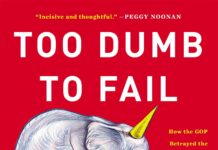To fully appreciate how important Russell T Davies’ new series is, you need the bigger historical picture.


HBO Max
Around 10pm on Friday, January 22, Britain’s social media feeds were in the midst of an emotional onslaught. The first episode of It’s a Sin, writer Russell T. Davies’ anticipated miniseries set at the height of the AIDS crisis, had just finished airing on Channel 4, with millions realizing: This was a landmark moment for British TV. Among the online chatter, one sentiment kept returning time and time again, as gay men conjured the image of teenagers secretly watching the show at a low volume on their bedroom TV’s, remote in hand to change the channel in case their parents caught them watching something “gay.” The older generation had this experience themselves with Davies’ late ’90s series Queer as Folk when it originally aired, and now a new generation were repeating it—and on mainstream, prime time television to boot, arriving on a wave of hype and no sliver of controversy.
This immediate reaction to It’s a Sin, which has now become available outside of Britain via HBO Max, has lingered on my mind. For a show that comprehends the weight of the AIDS crisis and its impact on a group of friends over the course of a decade, why was the gut instinct to center the imagined response of younger closeted viewers? The answer to this question goes some way to explain why the show has been so groundbreaking in its home country, in a way that may get overlooked by international viewers; that nearly 40 years later, this is the first time a TV series had directly grappled with how the AIDS crisis devastated Britain’s gay community. A “culture of silence,” like the one depicted in the show, has only continued to persist, and that this series exists in any form is something approaching a miracle.
But more importantly, it’s a tribute to a lost generation of gay men, that presents their lives as more than just the sum of the tragedies inflicted upon them. There’s a refreshing boldness to a show about the gay community during this era that is so sex positive, removing the shame and stigma around their sex lives to tackle the bigger issues around how these men were unfairly treated by society. The history of AIDS remains under-discussed in the UK education system (if mentioned at all), so what better history lesson for younger gays than a show that wouldn’t dream of demonizing them, or attempt to scare them off sex altogether?
The series follows four friends over the course of the ’80s: Ritchie (Olly Alexander, the lead singer of synth-pop band Years & Years) and Jill (Lydia West), two aspiring actors who became friends at university, who move in with Roscoe (Omari Douglas), a flamboyant gay who moves out after having enough of his Nigerian family’s persistent stigma, and Colin (Callum Scott Howells) a shy Welsh boy who moved to the big city for an apprenticeship. We track the dramatic shifts in their friendship as AIDS goes from being treated as a conspiracy theory, its silence in the media causing those with stories from across the Atlantic to be snottily dismissed as cranks, to becoming an inescapable part of their lives.
The show has become Channel 4’s most successful drama launch of all time. An impressive statistic, considering the network rejected it at first—and consequently, only gave it the green light after slashing the episode count down from eight to five. The show resonating with the mainstream, proving itself not just to be of interest to queer audiences, is one of the year’s pleasant surprises.
It’s a Sin may be the first UK drama series to deal with how AIDS affected Britain’s gay community, but it’s not the first British drama to directly tackle the pandemic—the 1987 miniseries Intimate Contact claims that title. A relic now only found on the Internet Archive, it follows a straight man who contracts the disease after sleeping with a prostitute on a business trip to New York, and the prejudice he receives after he is hospitalized with pneumonia over a year later, and his status is publicly disclosed—think “social realist Dallas Buyers Club” and you’re halfway there. The three-part series earned positive reviews, but even in 1987, the New York Times TV critic (reviewing when it aired on HBO in the US) seemed baffled by how the gay community kept being sidelined in narratives about a pandemic disproportionately affecting them.
A year before that series aired, Margaret Thatcher’s Conservative government belatedly launched a public health campaign to raise awareness, terrifying millions using John Hurt’s voice telling audiences “don’t die of ignorance.” Nicolas Roeg, best known for seminal ’70s horror Don’t Look Now, was chosen to direct the TV campaign after advertising agency TBWA decided the best method would be to “scare people”—naturally, this was a success, with rates of sexually transmitted diseases sharply decreasing afterwards. But as shown by It’s a Sin, AIDS being brought into the mainstream that way only increased the stigma the gay community already had to contend with.


Towards the end of her tenure as Prime Minister, Thatcher’s government instated one of the most homophobic laws in British history, Section 28, banning schools from “promoting homosexuality” and “teaching of the acceptability of homosexuality as a pretended family relationship.” Of course, gay people were already invisible on the curriculum; one of the more memorable scenes in It’s a Sin involves a teacher’s imagined outburst at having to scan through an entire library’s worth of books, only to find no material newly deemed illegal. In fact, the only place gay people were visible during this era was in right-wing scaremongering, either via the tabloids (Britain’s most-read paper, The Sun, launched a campaign offering to buy one-way plane tickets to get gay couples to leave the country) or through the government themselves, with the Tories fighting an election campaign alleging Labour would let teachers read books about gay sex to young pupils.
When Russell T Davies’ breakthrough show Queer as Folk (later remade for Showtime) debuted in 1999, this stigma was still on display, the press hysterical over the frank depictions of men enjoying each other’s company. But it’s the controversy amongst gay viewers that proved more interesting, with a backlash at how the show avoided any reference to the AIDS crisis. This proved to be a recurrent trope for the writer; he broke new ground at introducing LGBT characters to the mainstream, even going so far as to create a popular spin-off of his Doctor Who revival centered around the bisexual Captain Jack Harkness, but seemed more preoccupied with upturning stereotypes rather than confronting larger issues. The closest he’s got to date was his underrated 2015 miniseries Cucumber, following the exploits of a middle-aged gay man who remains a virgin due to his fear of sex—at one point referencing a giant “iceberg,” like the one seen in Nicolas Roeg’s public health ad, as a representation of his phobia.
Which is why It’s a Sin is such a monumental series. If the British gay experience as seen through the eyes of Davies’ previous shows has depicted either buying into a culture of silence to enjoy a happy life or a subconscious self-loathing, then this series is the perfect corrective: a loving tribute to a lost generation of men which doesn’t see them as mere tragic figures, or their sex lives as things to be ashamed of. For younger generations, the first to be taught about same-sex relationships in schools, it is the depiction of gay history they need to see—whether they’re watching with the volume down, making sure their parents don’t catch them, or not.
Need help finding something to watch? Sign up here for our weekly Streamail newsletter to get streaming recommendations delivered straight to your inbox.
Alistair Ryder is a contributor to Thrillist.
Our Newsletter








